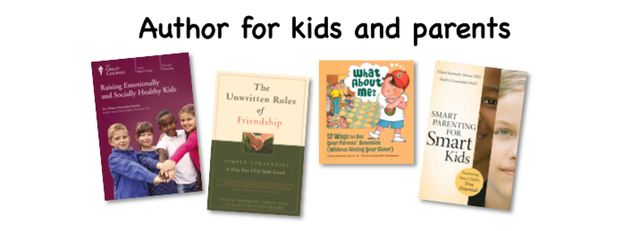Family Dynamics
Sibling Abuse and Bullying, Part 2
How parents can minimize and prevent sibling bullying
Posted December 31, 2015

In Part 1 of this post, I laid out some alarming statistics about how common aggression between siblings is. When that aggression is severe, it can cross the line to become bullying. In this part, we’ll take a look at some practical ways that parents can minimize sibling aggression and prevent it from escalating to bullying.
But first, we need to take a look at what we know about the developmental course of aggression in children.
The developmental context of aggression
According to psychologist Richard Tremblay, most children occasionally act in physically aggressive ways, starting between ages 18 to 24 months. They spontaneously strike out aggressively when they feel angry. Frequency of physical aggression increases up to about age two and a half or three and a half, then, for most children, decreases until the end of high school. Between four and seven years of age, children increasingly use nonphysical forms of aggression, such as talking meanly behind someone’s back. Only about 10% of children are frequently physically aggressive during the elementary school years, and these children are at risk for violent behavior as teens.
The bottom line is this: children don’t need to be taught to be aggressive; they need to learn how not to resort to aggression when they feel angry or frustrated or just want their way. This means learning to manage their own feelings, understand others' feelings, calmly and clearly communicate what they want, and resolve disagreements fairly. That's a lot to learn! Even adults have trouble doing these things sometimes.
What parents can do
So, what can parents do to curb sibling bullying?
1) Be a safety guardrail to reduce sibling bullying
All children deserve to feel safe in their own home. If one or more of our kids is getting hurt or is at risk for injury, it’s our job as parents to step in quickly to intervene. In the heat of the moment, don’t try to work out who did what or why. Just say, “Stop! It’s not safe for you two to be together right now” then separate the kids.
If your children are going through a period where they’re not getting along, or if the older sibling has trouble managing the younger sibling's behavior, avoid leaving the older child alone and in charge of the younger sibling.
If one or more siblings are injuring each other or destroying possessions, don't dismiss this. They need closer supervision. It's fine to ignore minor squabbles, but serious aggression between siblings requires parent intervention to prevent kids from going too far.
2) Work to create a peaceful home
The climate in the home can make a big difference in how frequent and intense sibling conflict is. When parents argue a lot and are cruel to each other, kids pick up on that tension and often act out their stress by hurting a handy sibling. Playing favorites or comparing kids also tends to build resentment between siblings that can fuel cruelty. Harsh discipline from parents is also linked to sibling conflict (Caffaro & Conn-Caffaro, 2005; Feinberg et al, 2012; Hoffman & Edwards, 2004; Tucker et al., 2014). Treating all family members with courtesy and caring won’t guarantee that siblings will get along, but it can certainly help set a peaceful tone for family interactions.
3) Address rationalizations
Rationalizations are statements that excuse or justify bad behavior. Familiarity breeds insensitivity, so brothers and sisters often tend to minimize or discount each other’s feelings. They do things to siblings that they would never dream of doing to a friend, because somehow they've convinced themselves that siblings' feelings don't matter.
For instance, Holly Recchia of Concordia University interviewed children about conflicts with siblings and heard rationalizations for mean behavior such as these:
“Ben was making faces at me, and I’m not really good at faces, I’m actually really good with my hands [...] and I hit him. (7-year-old boy)”
“I called him a stupid, mean, nasty little elf-brother! He IS pretty short. (11-year-old girl)”
Other common rationalizations include, “He started it!” “It was her fault!” “He made me do it!” and “I was just kidding!”
During a calm moment, explain the concept of rationalizations to your children and see if they can tell you why these don’t excuse cruel behavior.
If your child does do something cruel to a sibling, privately describe the impact of this behavior, so your child can imagine the sibling’s feelings, then ask, “What can you do to help him/her feel better?” Making amends lessens resentment and allows the child who made an unkind choice to have a path forward, beyond cruelty.
4) Teach problem-solving skills
Although parenting experts frequently recommend ignoring conflicts between siblings, research shows that mediation by parents can be useful for teaching kids how to solve problems. The key to helpful parental intervention is to avoid taking sides (which is what your kids want!) because that increases resentment and could trigger later retaliation. Instead, try to guide your children toward working things out themselves.
In mediation, rather than acting as judges and dictating a solution to a conflict, parents listen to both sides, lay out the issues, and encourage siblings to come up with fair and doable solutions (e.g., Siddiqui & Ross, 2004). When children are left to their own devices, sibling conflicts mostly commonly end with no resolution or one kid (usually the younger) giving in (Siddiqui & Ross, 1999). Mediation by parents can help kids see beyond "I want!" to understand another person's perspective and the bigger picture, so they can compromise or resolve problems.
Obviously, you can't do mediation for every conflict your children have, but doing it sometimes, for more serious or more persistent problems, offers an important learning opportunity for children. Kids are also more willing to use solutions that they suggest rather than ones that adults impose on them. With practice, it may be enough just to ask your kids, "What would be a fair solution?"
You can also teach problem-solving in a calm moment to help one or both children come up with ways to handle or prevent recurring problems. These could include issues about sharing, privacy, playing, bossing, or dealing with teasing or annoying behavior. Help your child or children think through what they could do or say in these situations that doesn't involve attacking a sibling.
5) Encourage sibling fun
Laurie Kramer and her colleagues (e.g., Kennedy & Kramer, 2008) have developed a program called “More Fun With Sisters and Brothers” that involves teaching siblings to manager their emotions, understand other people’s perspectives, and appropriately accept or decline a sibling’s invitation to play. This program increases how positively children view their sibling relationships and decreases how much parents need to intervene to address strong negative emotions or mean behavior. When siblings have fun together, they’re more motivated to resolve conflicts and less likely to be cruel.
Kids-against-the-grown-ups games are a fun and easy way to encourage sibling bonding. Noncompetitive joint projects or family activities can also be enjoyable activities for siblings to share.
Related posts:
Sibling Abuse and Bullying, Part 1
Helping the “Bad Kid” of the Family
Do Boys Need Rough and Tumble Play?
__
© Eileen Kennedy-Moore, PhD. Google+ Twitter: psychauthormom
Eileen Kennedy-Moore, PhD, is an author and clinical psychologist in Princeton, NJ (lic. # 35SI00425400). She frequently speaks at schools and conferences about parenting and children’s social and emotional development. www.EileenKennedyMoore.com
Subscribe to Dr. Kennedy-Moore’s monthly newsletter to be notified about new posts on the Growing Friendships blog.

Dr. Kennedy-Moore’s books and videos:
-- Have you ever wanted a parenting course you could do at YOUR convenience? Check out this fun and fascinating audio/video series on children’s feelings and friendships from The Great Courses®: Raising Emotionally & Socially Healthy Kids. || Topics include: Teaching Kids to Care; Developing Genuine Self-Esteem; How Kids Manage Anxiety and Anger; Playing Well With Others; Growing Up Social in the Digital Age. VIDEO preview.
On sale 70% off at www.TheGreatCourses.com/Kids
-- Smart Parenting for Smart Kids: Nurturing Your Child's True Potential || Chapters include: Tempering Perfectionism; Building Connection; Developing Motivation; Finding Joy. VIDEO preview.
-- The Unwritten Rules of Friendship: Simple Strategies to Help Your Child Make Friends || Chapters include: The Shy Child; The Little Adult; The Short-Fused Child; The Different Drummer.
-- What About Me? 12 Ways To Get Your Parents' Attention Without Hitting Your Sister. VIDEO preview.
Growing Friendships blog posts are for general educational purposes only. They may or may not be relevant for your particular situation. You’re welcome to link to this post, but please don’t reproduce it without written permission from the author.
Photo credit: By Ryan Dickey / CC BY 2.0
__
For further reading:
Caffaro, J. V. & Conn-Caffaro, A. (2005). Treating sibling abuse families. Aggression and Violent Behavior, 10, 604-623.
Feinberg, M. E., Solmeyer, A. R., & McHale, S. M. (2012). The third rail of family systems: Sibling relationships, mental and behavioral health, and preventive intervention in childhood and adolescence. Clinical Child and Family Psychological Review, 15, 43-57.
Hoffman, K. L. & Edwards, J. N. (2004). An integrated theoretical model of sibling violence and abuse. Journal of Family Violence, 3, 185-200.
Kennedy, D. E., & Kramer, L. (2008). Improving emotion regulation and sibling relationship quality: The More Run With Sisters and Brothers Program. Family Relations, 57, 567-578.
Recchia, H.E., Wainryb, C., & Pasupathi, M. (2013). “Two for flinching”: Children’s and adolescents’ narrative accounts of harming their friends and siblings. Child Development, 84, 1459-1474.
Siddiqui, A., & Ross, H. (1999). How do sibling conflicts end? Early Education and Development, 10, 315-332.
Siddiqui, A., & Ross, H. (2004). Mediation as a method of parent intervention in children’s disputes. Journal of Family Psychology, 18, 147-159.
Tremblay, R. E. (2008). Development of physical aggression from early childhood to adulthood. Rev ed. In R.E. Tremblay, R. G. Barr, R. DeV. Peters, M. Boivin (Eds. ) Encyclopedia on Early Childhood Development [online]. Montreal, Quebec: Centre of Excellence for Early Childhood Development; 2008:1-6. Available at: http://www.child-encyclopedia.com/documents/TremblayANGxp_rev.pdf.
Tucker, C. J., Finkelhor, D., Turner, H., & Shattuck, A. M (2014). Family dynamics and young children’s sibling victimization. Journal of Family Psychology, 28, 625-633.




